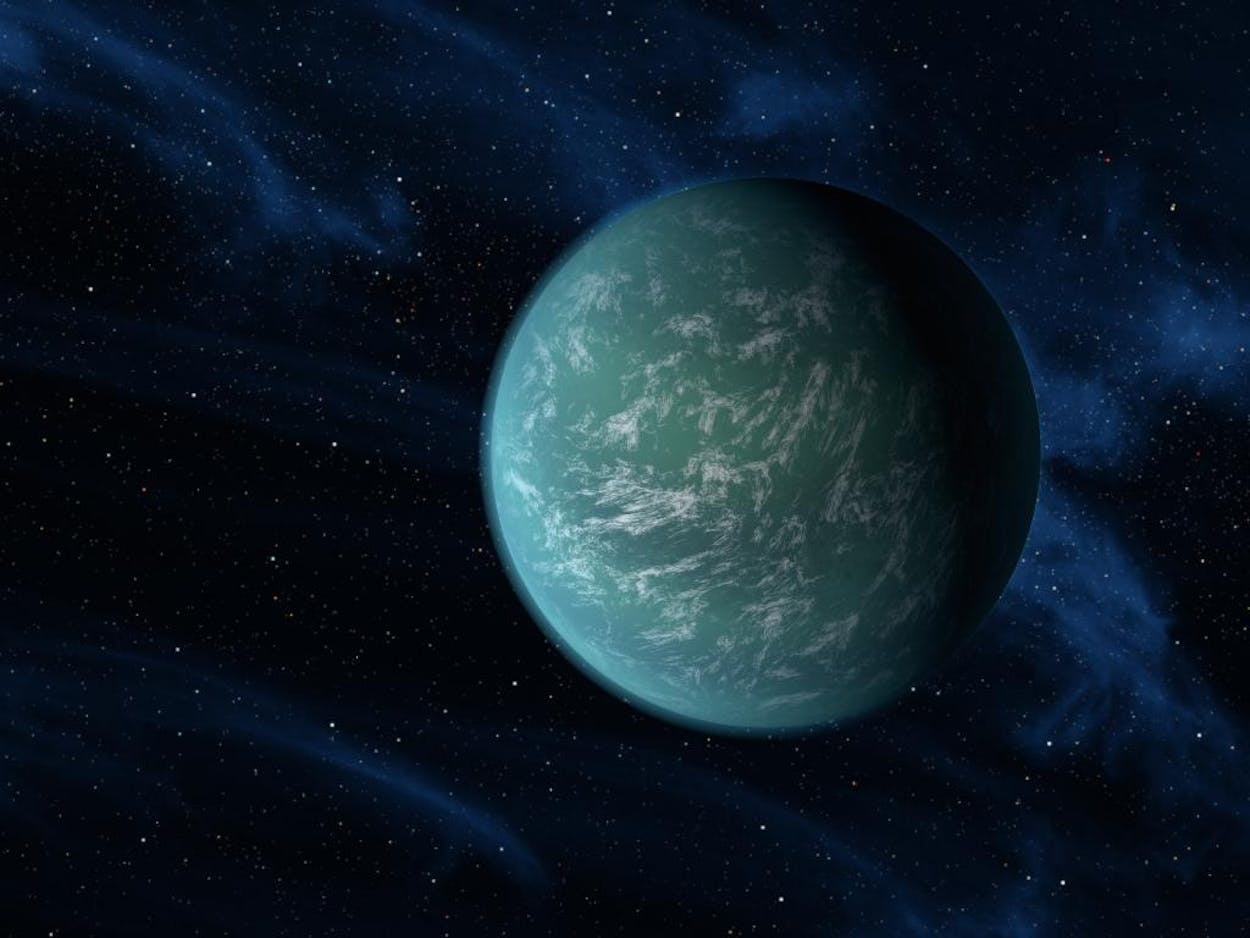NASA scientists announced the discovery of the first habitable planet outside of our solar system on Monday.
Kepler-22b, a mere 600 light years away, orbits a “Sun-like” star that is 2.4 times the size of earth and has a 290-day year, the Houston Chronicle’s Eric Berger reported. (Astronomers from the University of Texas at Austin collaborated with astronomers to confirm Kepler-22b’s planetary status, using the Harland J. Smith Telescope at the McDonald Observatory, Berger wrote.)
But the question on every Texan’s mind is, how’s the weather? Kepler-22b enjoys a “pleasant surface temperature of 70 degrees,” according to Carl Franzen of Talking Points Memo, and is situated in the “Goldilocks zone,” which, like the porridge in the fairy tale, is just right (i.e. not too hot and not too cold) for maintaining life.
Liquid water, an essential ingredient for “any form of life we understand,” could exist at such a temperature. But Time’s Michael D. Lemonick reminded readers of a few caveats. Scientists are still do not know if the planet is rocky, like earth, or if it is more like Neptune, which is mostly water and gas.
If Kepler 22b does turn out to be a small defrosted Neptune, that does not rule out life. Since Earth is the only example we know of to date of an inhabited planet, it would be foolish to make any generalizations. For all we know, astronomers on Kepler 22b are shaking their heads in doubt over whether a little, rocky planet like ours, with only 70% of its surface covered in shallow oceans, could possibly harbor life.
Lemonick ended his piece on a hopeful note: “While Kepler [NASA’s space telescope tasked with detecting Earth-like planets] hasn’t found a true Mirror Earth yet, the sheer number of likely worlds out there makes that only a matter of time,” he wrote. (Kepler-22b is one of 2,326 “candidate planets” that Kepler has discovered since the telescope was launched in 2009.)
“Seemingly Earth-like planet has the right temperature for life (and hopefully no Kardashians),” @Wired quipped as it announced the discovery on Twitter.
But not everyone was excited. Chris Matyszczyk, writing at CNET News, wonders why we keep searching for our planetary twin: “But why are we so obsessed about finding a planet–and, therefore, people–just like us? Personally, I am faintly tired of people just like us. I would dearly love to communicate and commune with entities that have 10 limbs, 15 methods of sound and vision, and no such thing as hockey.”
The alien-seeking SETI Institute—which ran out of funding in April but is now back in business—pointed the 42 giant radiotelescopes at its Allen Telescope Array towards the Kepler finds in hopes of finding intelligent life, according to the Los Angeles Times.
Maybe, just maybe, in a few years we can have a Contact moment:







